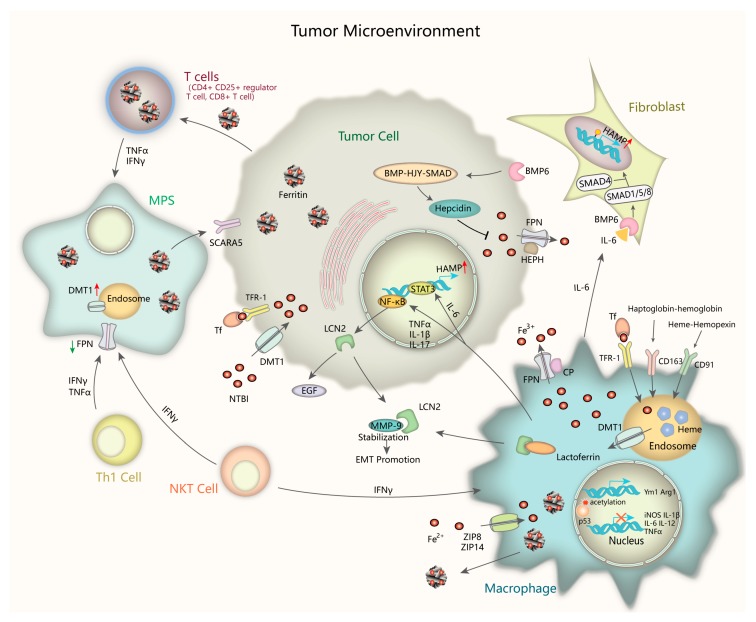Figure 2.
Iron handling in the tumor microenvironment. Tumor microenvironment compartments play a critical role in controlling iron metabolism. Inflammatory cytokines upregulate Lcn2 via NF-κB pathway. After releasing out of the cell, Lcn2 sequesters iron and stabilize MMP-9, promoting cell survival and matrix degradation leading to EMT. M2 macrophages are major sites of taking up, metabolizing, storing, and exporting iron. They supply iron to accelerate tumor growth by multiple transport pathways. Tumor-associated fibroblasts contribute to hepcidin induction via paracrine IL-6/BMP/SMAD signaling. Circulating T cells has accumulated H-ferritin to maintain proper immune functions. Th1 cells and NKT cells can secret cytokines like IFN-γ and TNF to the environment, which increase DMT1 whereas decrease FPN level, thus resulting in iron sequestration in the MPS. Tumor-associated fibroblasts induce hepcidin expression via paracrine IL-6-BMP-SMAD signaling. Lcn2, Lipocalin 2; NF-κB, nuclear factor kappa-light-chain-enhancer of activated B cells; MMP-9, matrix metalloproteinases-9; EMT, epithelial-mesenchymal transition; IL-6, interleukin-6; NKT, natural killer T cells; IFN—γ, interferon-γ; TNF, tumor necrosis factor; FPN, ferroportin; MPS, mononuclear phagocyte system.

